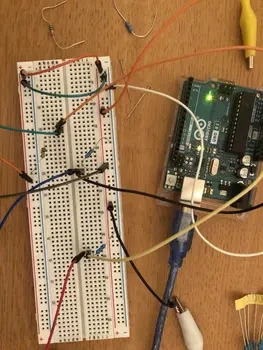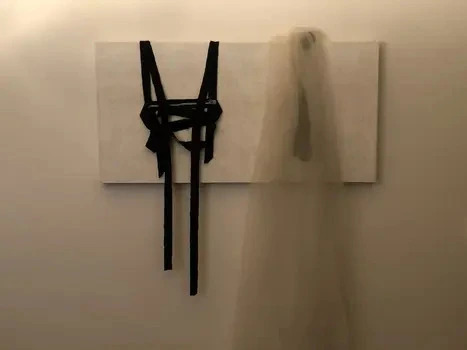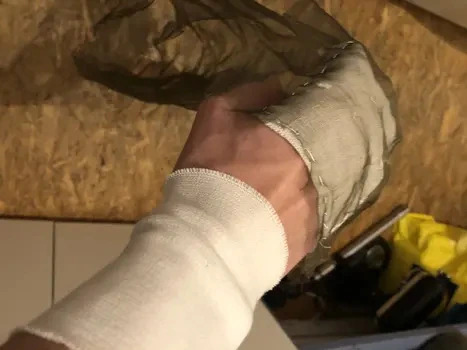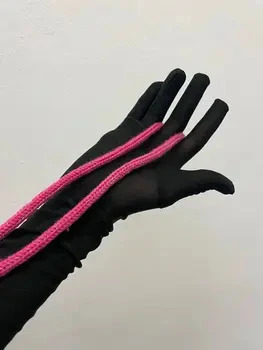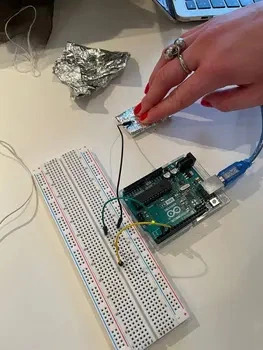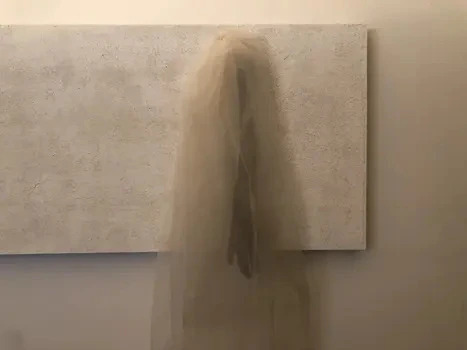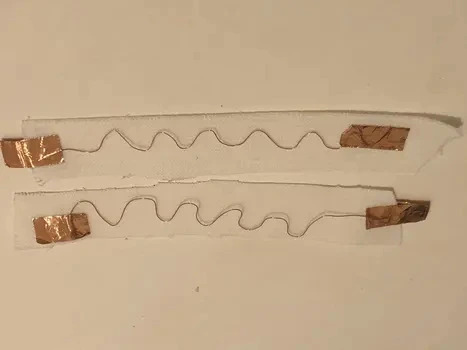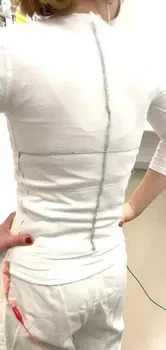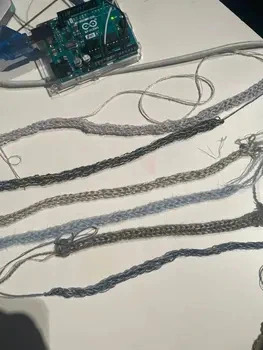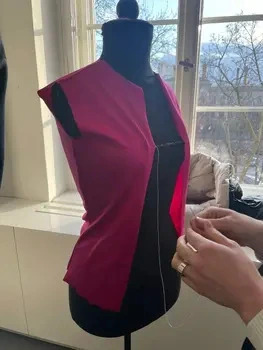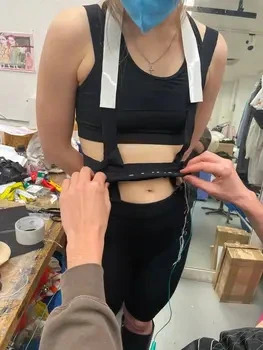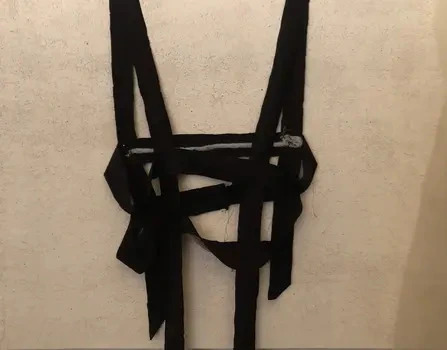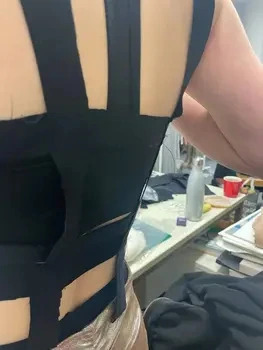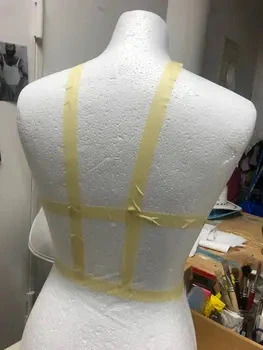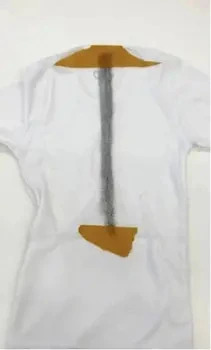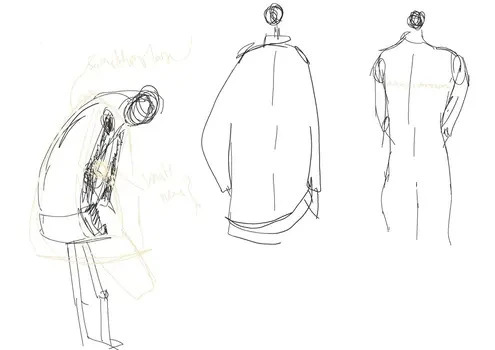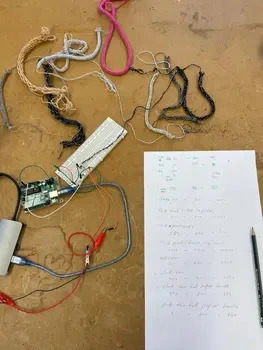Don’t Forget to Breathe
Jo-Moritz Krah, Polina Shpazhnikova, Zihern Lee
Don’t Forget to Breathe
Jo-Moritz Krah, Polina Shpazhnikova, Zihern Lee
Description
During the “Wearing Sound” seminar we were able to approach the relationship between motion and sound from a perspective of embodiment. Since garments are in direct contact and move together with the body we aimed for using sound in order to raise awareness of movements but also externalising processes in the body to strengthen their importance. Therefore we eventually designed our project around the act of breathing as a fundamental function of the human body. In the beginning we drew our main inspiration from “Seugmu”, a Korean dance that uses a somatic philosophy of respiration. During the development we adapted our garments and sensors further to the behaviour of our own bodies.
1. RESPIRATION GARMENT
After first experiments measuring spine bending (RS_008, RS_009), we quickly found stretch-sensitive yarn to be most suitable for sensoring the sensitive body movements of breathing (RS_001, RS_001_video, RS_001_video2). In a next step we evaluated different kinds of stretch-sensitive sausages (built with the Strickliesel) in terms of length and thickness. Therefore we used different yarns in combination with the stretch-sensitive yarn, which led to significantly different outcomes (RS_002, RS_010). And also the location of the sensors played an important role. We experimented with different placements and prototypes of garments (RS_003, RS_004) and eventually identified the upper back und the belly as the locations where we could measure the breathing best. To measure this sensitive movements of the body our garment was from the beginning supposed to be worn tight on the body (RS_001), finally we got rid of more and more textile in order to concentrate on the central aspect of breathing while leaving the fine body movements still visible on the bare skin (RS_004, RS_005, RS_006).
2. ORGANZA GLOVE
In addition to the direct sensoring of the breath we were interested in the embodiment of the breath to amplify the immersive experience in combination with the sound. After trying different materials, especially organza showed an interesting floating behaviour which could be read as a visualisation of air and breathing (OG_001_video). Inspired by the earlier mentioned “Seugmu” we attached the textile to the wrist, later to a glove, to let it float almost like wings (OG_001_video, OG-002). In a next step we experimented with different ways to sensor the behaviour of the organza textile. From capacity sensoring (OG_007_video, OG_008_video) to piezo-resistive material (OG_006), we eventually decided to use stretch-sensitive yarn to measure the wrist movement which leads to the floating behaviour of the organza textile (OG_003, OG_005).
3. SOUNDSCAPE (referenced in MAX / MSP patch)
While designing the soundscape we mainly aimed for three goals in combination with our final garments (Final_001). Firstly to create an awareness of the breath with directly triggered samples, secondly to evoke an immersive experience while enforcing subtle changes of the soundscape not directly recognisable and lastly to create an embodiment of the breath with help of the organza glove. To realise our concept we attached three analog sensors to the Arduino (Arduino_001) and designed several MAX / MSP patches reading the incoming data. (input & smooth) takes the incoming data and smoothes the values to stabilise them. (breath) triggers two breathing samples depending on the direction of the sensor data. In addition to that holding the breath and speed of breath are recognised with a “counter” object in Max / MSP. (belly) changes the volume of an Ableton track depending on the belly-breath intensity. (glove) controls the speed of an arpeggiator depending on the glove movement. (filter) applies a high-pass filter to the string track in Ableton whenever the breath is hold. (lfo) changes the frequency of an LFO which is influencing the melody track in Ableton.
4. OUTCOMES
While integrating sensors into textile to measure body movements is a great challenge, we were highly inspired by the process of working with the material in combination with sound itself. Therefore especially the opportunity to create completely new kinds of immersive experiences and interactions of body and sound will be of great interest for us also in the future.
